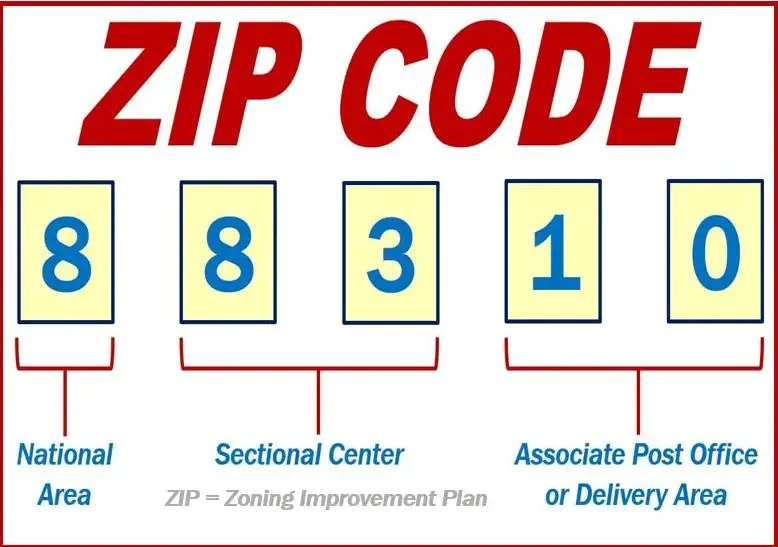We’ve all used postal codes or zip codes when shipping packages or registering for online accounts. But do you know the difference between postal codes and zip codes?
In this blog, we will explain the difference between zip codes and postal codes and how they are used. We will also discuss the origin of postal codes and zip codes and how they have evolved over time.
Definition of zip code

A zip code and a postal code are often used interchangeably, but there is a slight difference between the two. Zip codes are specific to the United States and are used to identify a particular geographic area. Postal codes, on the other hand, are used in other countries such as Canada and the United Kingdom to identify a specific address.
Postal codes, on the other hand, are used in other countries such as Canada and the United Kingdom to identify a specific address. The key difference between a zip code and a postal code is that a zip code is only used in the United States while a postal code can be used in other countries.
Definition of postal code

Postal codes and zip codes are terms that are often used interchangeably, however they are two very different things. A postal code is a series of letters or digits or both, sometimes including spaces or punctuation, included in a postal address for the purpose of sorting mail. Postal codes are used in almost every country worldwide and are often known as postcodes, post codes, Eircodes, PIN codes and ZIP codes.
Postal codes are used in almost every country worldwide and are often known as postcodes, post codes, Eircodes, PIN codes and ZIP codes. On the other hand, a zip code is a specific type of postal code used in the United States only. The main difference between the two is that postal codes are used for sorting mail and sorting related operations, whereas zip codes are only used for sorting and delivery purposes.
Therefore, a zip code is a subset of a postal code and may not include all of the information associated with a postal code.
Differences between zip code and postal code

Have you ever been confused about the difference between a zip code and a postal code? You’re not alone!
These two terms are often used interchangeably, but they actually have distinct meanings. A zip code is a specific number assigned by the United States Postal Service (USPS) to a geographic area. It is used to identify the area and help the USPS deliver mail to the right address.
A postal code, on the other hand, is a code used by other countries to identify a specific geographic location. It usually consists of a combination of letters and numbers that can identify a city, street, or even a specific address.
While the two terms are often used interchangeably, it is important to understand the difference between a zip code and a postal code.
Examples of zip codes and postal codes
The difference between a zip code and a postal code is more than just terminology. Both are used to identify a specific location, but the way they are used and the information they provide can vary.
It is used for mail delivery purposes, and can sometimes be used to identify a smaller area within a larger region. Postal codes, on the other hand, are used in many countries around the world to identify a specific location.
These codes are usually longer and more precise than a zip code, and can be used to more easily pinpoint a specific address.
Benefits of knowing the difference
Understanding the difference between a zip code and a postal code is essential in today’s world. Zip codes, or “Zone Improvement Plan” codes, are a system of numbers created by the United States Postal Service (USPS) that helps direct mail more efficiently. Postal codes, on the other hand, are used in most other countries around the world to help simplify the sorting and delivery of mail.
Postal codes, on the other hand, are used in most other countries around the world to help simplify the sorting and delivery of mail. Knowing the difference between a zip code and a postal code can help you ensure that your mail is reaching its intended destination. For instance, if you are sending a letter to someone in the United States, you will need to include a 5-digit zip code.
But if you are sending mail to someone in Canada, you will need to include a 6-character alphanumeric postal code. By understanding the distinction between zip codes and postal codes, you can make sure that your mail is sent to the right location. In addition, the difference between zip codes and postal codes can be helpful when it comes to online shopping.
Knowing the difference can help you ensure that you are entering the correct information when filling out forms or ordering items online. Overall, understanding the difference between a zip code and a postal code can help you ensure that your mail is sent to the right destination.
It can also help you fill out forms and order items online accurately.
Final Touch
In conclusion, zip codes and postal codes are two different systems for sorting and delivering mail. Zip codes are a system of postal codes used in the United States, while postal codes are used in many other countries.
Zip codes are used to identify a specific area within the United States, while postal codes are used to identify a specific address or group of addresses.

